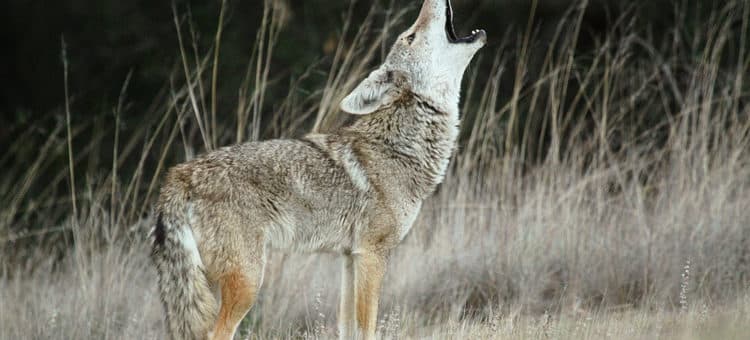
February is Coyote Mating Season
- Posted by Barrington Hills
- On February 15, 2022
Breeding season for coyotes lasts 4-6 weeks and peaks in late February to early March. Male coyotes are not usually aggressive but it is possible that coyote attacks on pets will rise during mating season. A pack of coyotes may protect its territory. Territorial assaults are more likely on larger dogs perceived as a threat by coyotes. Overall research suggests that coyote assaults rise during pup raising season, and not breeding season.[1]https://a-z-animals.com/
Residents may see a coyote resting or crossing through their properties. This is not uncommon to occur during the day. As long as they are given their space, coyotes do not typically pose a threat to people or pets.
Education is the best tool when dealing with coyotes. WildLifeIllinois.org and UrbanCoyoteResearch.com provide a wealth of information, including a summary of how to avoid conflicts:
- If a coyote approaches you, yell, stand up straight and wave your arms (to make yourself appear larger) or throw something at the coyote to make it move away. The goal is to scare it away, not injure it.
- Do not feed coyotes. Property owners should limit the availability of unintentional food sources, such as bird food, pet food, ripe fruit, or trash.
- Do not leave small pets unattended when they are outside, especially at night. Consider the use of fencing or kennel runs to protect small pets.
- Comply with local ordinances that require oversight/restraint of pets. Coyotes that are protecting their den or young will vigorously defend the area. Simply walking your dog in another area keeps everyone safe.
- Target the responsible coyote(s) when a pattern of “undesirable” behavior develops. Usually, it will be easier to change human and domestic animal use of an area than to capture the coyote(s). Recognize that coyote population reduction (removing some or all of the coyotes in an area) is usually unrealistic and always temporary. Removal of coyotes also requires time, effort, and funding.
- Alert neighbors if, and as soon as, a problem develops with a coyote.
- If removal of a coyote is deemed necessary, hire a nuisance wildlife control operator who is licensed by the Illinois Department of Natural Resources (IDNR).
Coyotes are valuable members of the wildlife community. They help keep populations of small mammals and rabbits under control. As Illinois’ largest remaining predator, they are an integral part of healthy ecosystem functioning.
If you need help to solve a wildlife issue, visit WildLifeIllinois.org.
References
| ↑1 | https://a-z-animals.com/ |
|---|


